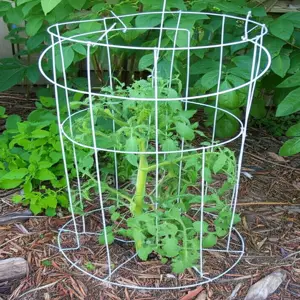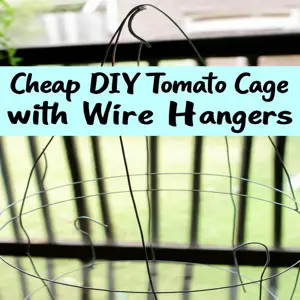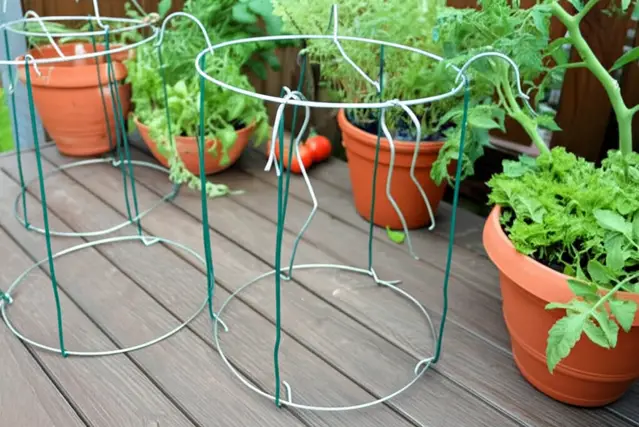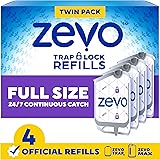Are your tomato plants sprawling out of control? Tired of flimsy store-bought cages that can’t handle the weight of juicy, ripe tomatoes? If so, you’ve come to the right place! This guide will walk you through building incredibly sturdy and unbelievably cheap tomato cages using something you probably already have: wire hangers! In 2024, sustainable and budget-friendly gardening is more important than ever, and this project ticks both boxes.
Forget spending a fortune on expensive cages that might not even last a season. We’ll show you a simple, step-by-step method for creating durable cages that will support your tomato plants from seedling to harvest. Plus, you’ll be upcycling, reducing waste, and feeling good about your eco-conscious gardening practices. Let’s get started!
Why Choose DIY Tomato Cages?
Before diving into the specifics, let’s consider the advantages of building your own tomato cages, especially with repurposed materials like wire hangers.
Cost-Effectiveness
This is perhaps the most compelling reason. A quick trip to your local garden center will reveal that even basic tomato cages can cost upwards of $10-$20 each. For a gardener with multiple plants, the expense adds up quickly. Wire hangers, on the other hand, are practically free! You likely already have a collection gathering dust in your closet. Even if you need to acquire some, thrift stores and donation centers are excellent sources for obtaining them at minimal cost. This makes DIY cages a fantastic option for budget-conscious gardeners. According to a recent survey by the National Gardening Association, the average household spends approximately $500 per year on gardening supplies. Making your own cages is an excellent way to dramatically reduce this cost.
Durability and Stability
Many commercially available tomato cages are flimsy and prone to collapsing under the weight of mature tomato plants. Especially indeterminate varieties, which can grow incredibly tall and produce heavy fruits, require robust support. The method outlined below results in surprisingly sturdy cages that can withstand significant weight and even moderate winds. The interlocking design, combined with the inherent strength of wire hangers, provides excellent stability.

tomato plant support
Customization
One size does not fit all when it comes to tomato cages. Different varieties have different growth habits, and the space available in your garden may dictate the size of your cages. Building your own allows you to customize the height and diameter to perfectly suit your needs. Want extra-tall cages for vigorous indeterminate varieties? No problem. Need smaller cages for determinate varieties or container gardening? Easily done. The flexibility of DIY is a major advantage.
Sustainability and Upcycling
In today’s world, environmental awareness is paramount. Upcycling materials like wire hangers is a fantastic way to reduce waste and minimize your environmental impact. Instead of discarding unwanted hangers, you’re giving them a new lease on life. This aligns with the growing trend of sustainable gardening practices, which emphasizes resource conservation and minimizing the use of synthetic materials. According to the EPA, Americans throw away over 16 million tons of textiles each year, a significant portion of which could be reused or repurposed.
Easy to Store
Unlike some large, rigid tomato cages, the wire hanger cages can be disassembled (though it is not necessary) and flattened somewhat for off-season storage. This helps save space in your garage or shed. While they don’t fold completely flat, they take up considerably less room than fully assembled metal cages.
Materials You’ll Need
The beauty of this project is its simplicity. You’ll only need a few basic materials, most of which you probably already have:
- Wire Hangers: The number you need will depend on the desired size and sturdiness of your cages. A good starting point is 8-10 hangers per cage for smaller determinate varieties and 12-15 for larger indeterminate varieties. Avoid plastic hangers, as they lack the necessary strength. Standard metal clothes hangers are ideal.
- Wire Cutters: Essential for cutting and shaping the wire hangers. A decent pair of wire cutters will make the process much easier and safer.
- Pliers (optional but recommended): Pliers can be helpful for bending and shaping the wire, especially when creating the interlocking connections. Needle-nose pliers are particularly useful for manipulating the wire in tight spaces.
- Gloves (recommended): Protect your hands from scratches and cuts while working with the wire hangers. Work gloves or gardening gloves will provide adequate protection.
- Measuring Tape (optional): If you want to ensure consistent cage sizes, a measuring tape can be helpful.
- Zip Ties or Wire (optional): For added security, you can use zip ties or extra wire to reinforce the connections between the hangers. This is particularly useful for larger cages or in windy areas.
- Safety Glasses: Protecting your eyes when cutting and bending wire is essential. A small piece of wire shooting off could cause an eye injury. Safety glasses are a simple way to prevent this.
Step-by-Step Instructions: Building Your Tomato Cage
Follow these simple steps to create sturdy and cost-effective tomato cages from wire hangers.
Step 1: Preparing the Hangers
The first step is to prepare the wire hangers by cutting off the hook portion. Using your wire cutters, carefully cut the hanger just below the twisted part of the hook. Discard or recycle the hooks. You should now have a U-shaped piece of wire.
Safety Tip: Always wear safety glasses when cutting wire. Small pieces of wire can fly off at high speed and potentially cause eye injury.
Step 2: Shaping the Hangers
Now, it’s time to shape the U-shaped pieces into a more useful form. This involves bending the ends of the U to create small loops or hooks. These loops will be used to interlock the hangers together to form the cage.
- Using your pliers (or your hands, if the wire is pliable enough), bend one end of the U-shaped wire inward to create a small loop, approximately 1-2 inches from the end. This loop should be large enough to easily hook onto another piece of wire.
- Repeat this process on the other end of the U-shaped wire, creating another loop. Ensure that the loops face in the same direction.
The goal is to have a piece of wire with a loop at each end, resembling a simplified letter “C” with loops on its tips. Repeat this process for all the wire hangers you plan to use for your cage.
Step 3: Assembling the Cage
With the hangers prepared, you can now begin assembling the cage. This involves interlocking the loops of the hangers to create a cylindrical structure.
- Take two of the prepared wire pieces and hook the loop of one onto the loop of the other.
- Continue adding more pieces, linking each new piece to the previous one to form a circle.
- As you add pieces, gradually shape the circle into a more cylindrical form.
- The number of hangers you use will determine the diameter of the cage. For larger tomato plants, use more hangers to create a wider cage.
Tip: It’s helpful to assemble the cage on a flat surface initially to ensure it’s even and stable.
Step 4: Creating the Height
Once you have a circle of interconnected hangers, you need to add height to the cage. This is done by stacking additional rings of hangers on top of the first one.
- Take another set of prepared wire hangers and create a second ring, just like you did in the previous step.
- Carefully place this second ring on top of the first ring, aligning the loops.
- Interlock the loops of the top ring with the loops of the bottom ring to connect the two layers.
- Repeat this process to add as many layers as needed to achieve the desired height for your cage. The height will depend on the variety of tomato you are planting. Determinate varieties do not need very tall cages, while indeterminate varieties may benefit from 4-5 feet in height.
Tip: For added stability, you can use zip ties or extra wire to secure the connections between the layers. This is especially important for taller cages.
Step 5: Reinforcing the Structure (Optional)
While the interlocking design of the wire hanger cages provides a good level of stability, you can further reinforce the structure for added durability, especially in windy locations or for supporting heavy tomato plants.
- Use zip ties or extra pieces of wire to secure the connections between the hangers at multiple points along the cage.
- Focus on reinforcing the points where the loops interlock, as these are the weakest points in the structure.
- You can also add vertical supports by attaching extra pieces of wire along the height of the cage, connecting the top and bottom rings.
Alternative Reinforcement: Consider using wooden stakes hammered into the ground next to the cage, and then tie the cage to the stakes for additional support. This is particularly useful for very tall cages or in areas prone to strong winds.
Step 6: Planting Your Tomato Plants
Now that your tomato cage is complete, it’s time to plant your tomato plants. Carefully place the cage over the newly planted seedling, ensuring that the plant is centered within the cage. Make sure the cage is securely anchored in the ground.
As the tomato plant grows, gently guide the stems through the openings in the cage. This will help to support the plant and prevent it from sprawling onto the ground. Continue to monitor the plant’s growth and adjust the stems as needed.
Tips and Tricks for Success
Here are some additional tips and tricks to ensure the success of your DIY tomato cage project:
- Choose the right hangers: Opt for sturdy, metal hangers that can withstand the weight of mature tomato plants. Avoid thin, flimsy hangers that are likely to bend or break.
- Consider the tomato variety: Different tomato varieties have different growth habits. Determinate varieties, which are bushier and more compact, require smaller cages than indeterminate varieties, which can grow very tall and sprawling. Choose the size of your cage accordingly. Research your specific variety beforehand.
- Adjust the cage size as needed: As your tomato plants grow, you may need to adjust the size or shape of the cage to accommodate their expanding growth. You can easily add or remove hangers to modify the cage.
- Monitor for pests and diseases: Regularly inspect your tomato plants for signs of pests or diseases. Address any problems promptly to prevent them from spreading and affecting the health of your plants. Common tomato pests include aphids, tomato hornworms, and whiteflies. Common diseases include early blight, late blight, and Septoria leaf spot.
- Provide adequate water and nutrients: Tomato plants require plenty of water and nutrients to thrive. Water deeply and regularly, especially during hot, dry weather. Fertilize regularly with a balanced fertilizer to provide the necessary nutrients. Soil testing can help determine the specific nutrient needs of your plants.
- Prune your tomato plants: Pruning can help to improve air circulation, reduce the risk of disease, and encourage fruit production. Remove suckers (the small shoots that grow in the junction between the main stem and the branches) to direct the plant’s energy towards fruit production.
- Harvest regularly: Harvest your tomatoes regularly as they ripen. This will encourage the plant to continue producing more fruit. Gently twist or cut the ripe tomatoes from the vine.
- Clean and store the cages: At the end of the growing season, clean your tomato cages and store them in a dry place. This will help to prolong their lifespan and prevent rust.
- Color Considerations: Some gardeners paint their wire cages green to help them blend in with the foliage. This is purely an aesthetic choice and does not affect the functionality of the cage. Use a paint formulated for outdoor use.
Trends in Sustainable Gardening (2024 Update)
The trend towards sustainable gardening continues to grow in 2024. Here are some of the key trends shaping the gardening landscape:
- Regenerative Gardening: This goes beyond simply “organic.” It focuses on improving soil health, increasing biodiversity, and sequestering carbon. Composting, cover cropping, and no-till gardening are key components.
- Water Conservation: With increasing concerns about water scarcity, gardeners are adopting strategies like drip irrigation, rainwater harvesting, and using drought-tolerant plants.
- Pollinator Gardens: Creating gardens that attract bees, butterflies, and other pollinators is crucial for supporting biodiversity and food production. Planting native flowers and avoiding pesticides are essential.
- Vertical Gardening: For those with limited space, vertical gardening techniques are becoming increasingly popular. Using walls, fences, and trellises to grow plants allows for maximizing yields in small areas. The DIY tomato cage we are building can be adapted to vertical gardening setups.
- Food Security: Growing your own food is seen as a way to improve food security and reduce reliance on industrial agriculture. More people are turning to gardening as a means of providing fresh, healthy produce for their families.
- Community Gardens: These provide shared space for gardening in urban areas, fostering community connections and providing access to fresh produce for those who may not have their own land.
- Upcycling and Repurposing: Using recycled materials for gardening projects is a growing trend, driven by a desire to reduce waste and save money. Our DIY tomato cage project aligns perfectly with this trend.
- Smart Gardening: Utilizing technology to optimize gardening practices is also on the rise. Smart irrigation systems, soil sensors, and weather monitoring apps can help gardeners make informed decisions and improve yields.
Statistics on Home Gardening
Here are some relevant statistics that highlight the popularity and impact of home gardening in recent years:
- Growing Popularity: According to the National Gardening Association, over 77% of US households participate in some form of gardening.
- Millennial Interest: Millennials are showing an increasing interest in gardening, driven by a desire for fresh, healthy food and a connection to nature.
- Economic Impact: The gardening industry is a significant contributor to the economy, generating billions of dollars in revenue each year.
- Health Benefits: Studies have shown that gardening can improve physical and mental health, reduce stress, and increase overall well-being.
- Environmental Benefits: Home gardening can help to reduce carbon emissions, conserve water, and promote biodiversity.
Regulations and Considerations
While building your own tomato cages is generally a straightforward process, it’s important to be aware of any relevant regulations or considerations in your area.
- Homeowners Associations (HOAs): If you live in a community with an HOA, check their guidelines regarding gardening structures and height restrictions. Some HOAs may have rules about the appearance and size of garden structures like tomato cages.
- Local Ordinances: Some cities and counties may have ordinances related to gardening, such as restrictions on the types of plants you can grow or the use of pesticides. Check with your local government to ensure that you are in compliance with all applicable regulations.
- Property Lines: Be mindful of your property lines when placing your tomato cages. Ensure that the cages do not encroach on your neighbor’s property.
- Safety Considerations: Take precautions to ensure that your tomato cages are safe and do not pose a hazard to people or animals. Avoid using sharp or jagged materials that could cause injury.
- Recycling Regulations: When disposing of used wire hangers or other materials, follow your local recycling regulations. Many communities have programs for recycling metal and other materials.
Alternatives to Wire Hanger Tomato Cages
While wire hanger tomato cages are a cost-effective and sustainable option, there are other alternatives to consider, depending on your needs and preferences:
- Commercial Tomato Cages: These are readily available at garden centers and online retailers. They come in a variety of sizes and materials, including metal, plastic, and wood. While more expensive than DIY options, they can be a convenient choice for some gardeners.
- Tomato Stakes: Stakes are a simple and inexpensive way to support tomato plants. Drive a stake into the ground next to the plant and tie the stem to the stake as it grows. Stakes require more frequent tying and may not provide as much support as cages.
- Tomato Trellises: Trellises are a more elaborate support system that can be used for indeterminate tomato varieties. They provide a strong and stable structure for the plants to climb. Trellises can be made from wood, metal, or other materials.
- Florida Weave: This technique involves using stakes and twine to create a support system for tomato plants. Stakes are driven into the ground at regular intervals, and twine is woven between the stakes to support the plants. The Florida weave is a good option for supporting rows of tomato plants.
- DIY Bamboo Cages: If you have access to bamboo, you can create sturdy and attractive tomato cages using bamboo poles. Cut the bamboo poles to the desired length and tie them together to form a cage.
| Support Method | Cost | Durability | Ease of Use | Sustainability |
|---|---|---|---|---|
| Wire Hanger Tomato Cages | Very Low | Medium | Easy | High (Upcycled) |
| Commercial Tomato Cages | Medium to High | Medium to High | Easy | Low to Medium |
| Tomato Stakes | Low | Low to Medium | Easy | Medium |
| Tomato Trellises | Medium to High | High | Medium | Medium to High |
| Florida Weave | Low | Medium | Medium | Medium |
| DIY Bamboo Cages | Low (if bamboo is available) | Medium | Medium | High (if bamboo is sustainably sourced) |
Real-World Example: From Clutter to Cage!
My neighbor, Sarah, is an avid gardener. Last year, she complained about her tomato plants collapsing under the weight of their fruit, despite using store-bought cages. She also confessed to having a pile of wire hangers taking up space in her spare closet. I suggested she try making her own cages using the wire hanger method. Initially skeptical, she gave it a try. She was amazed at how sturdy the cages turned out and how well they supported her plants. She even customized the height of the cages to match the specific needs of her different tomato varieties. This year, she is expanding her garden, and building wire hanger cages is one of her first projects.
This example illustrates how a simple DIY project can solve a common gardening problem, save money, and promote sustainability. It’s a testament to the ingenuity of gardeners and their willingness to experiment with creative solutions.
Troubleshooting Tips
Even with clear instructions, you might encounter a few challenges. Here’s how to handle them:
- Hangers are too hard to bend: Some hangers are made of thicker wire than others. Use pliers for more leverage, or consider soaking the hangers in warm water for a few minutes to make them more pliable.
- Cage feels unstable: Reinforce the connections with zip ties or extra wire. You can also add stakes around the outside of the cage and tie the cage to the stakes.
- The loops keep coming undone: Ensure the loops are securely closed. Use pliers to crimp them shut if necessary.
- The cage is too short/wide: Add more hangers to increase the height or width of the cage.
Regulatory Updates on Gardening Practices (2024)
Keeping up with the latest regulatory updates on gardening practices is important for responsible gardening. Here’s a brief overview of key areas to be aware of in 2024:
- Pesticide Use: Regulations regarding pesticide use continue to evolve. Many states and localities are restricting or banning the use of certain pesticides due to concerns about their impact on human health and the environment. Always check the labels carefully and follow all instructions. Consider using organic or natural pest control methods whenever possible. The EPA provides detailed information on pesticide regulations.
- Water Restrictions: Due to ongoing concerns about water scarcity, many areas have implemented water restrictions that may affect gardening practices. Be aware of any restrictions in your area and adjust your watering habits accordingly. Consider using water-wise gardening techniques, such as drip irrigation and mulching.
- Composting Regulations: Some municipalities have regulations regarding composting, particularly in urban areas. Check with your local government to ensure that your composting practices are in compliance with any applicable regulations.
- Invasive Species: Be aware of invasive plant species in your area and avoid planting them in your garden. Invasive species can outcompete native plants and disrupt ecosystems. Consult with your local agricultural extension office for information on invasive species in your area.
- Soil Contamination: Be aware of the potential for soil contamination, particularly in urban areas. Get your soil tested if you suspect contamination. Avoid using contaminated soil for gardening.
Future Trends in DIY Gardening
The DIY gardening movement is constantly evolving, driven by innovation, sustainability, and a desire to connect with nature. Here are some trends to watch in the coming years:
- 3D-Printed Garden Structures: 3D printing technology is becoming increasingly accessible, allowing gardeners to create custom-designed garden structures, including planters, trellises, and even tomato cages.
- Smart DIY Gardening Systems: Integrating technology into DIY gardening projects is becoming more popular. This includes building your own automated watering systems, climate-controlled greenhouses, and sensor-based plant monitoring systems.
- Bioremediation Gardening: Using plants to clean up contaminated soil is gaining traction. Gardeners are exploring the use of specific plant species to remove toxins from the soil.
- Mushroom Cultivation in Gardens: Growing edible mushrooms in home gardens is becoming more common. Mushrooms can be cultivated in shady areas and can provide a valuable source of protein.
- Repurposing Construction Materials: Gardeners are finding creative ways to repurpose construction materials, such as concrete blocks, pallets, and pipes, into garden structures and planters.
- Seed Saving and Sharing Networks: Community-based seed saving and sharing networks are growing in popularity. These networks allow gardeners to exchange seeds and preserve heirloom varieties.
Visual Guide
[*Insert images here showcasing each step of the process. Examples: 1. Pile of wire hangers, 2. Hanger with hook cut off, 3. Bending the wire to create loops, 4. Interlocking the loops, 5. Completed cage, 6. Cage around tomato plant*]
Video Tutorial
[*Embed a YouTube video showcasing the building of the tomato cage. Alternatively, provide a link to a relevant video*]
Benefits for Different Types of Gardeners
- Beginner Gardeners: This project is simple, requires minimal tools, and uses readily available materials, making it ideal for beginners.
- Budget Gardeners: The cost of materials is practically zero, making this a perfect solution for those on a tight budget.
- Experienced Gardeners: Even experienced gardeners appreciate a cost-effective and sustainable solution. The cages can be customized to suit specific plant needs.
- Urban Gardeners: Upcycling materials is crucial in urban gardening. These cages are easy to store and transport.
- Sustainable Gardeners: This project aligns perfectly with sustainable gardening principles, reducing waste and promoting resource conservation.
What to do with extra wire hangers
There are many other uses for wire hangers in and around the home and garden:
- Plant supports for other plants: Smaller versions of the tomato cage can support pepper plants or other vegetables.
- Craft projects: Wire hangers can be used for various craft projects, such as creating wreaths or decorative items.
- Cleaning: Use a straightened wire hanger to unclog drains or reach into tight spaces.
- Car emergencies: A straightened hanger can be used to unlock a car door in an emergency situation.
FAQ: Your Questions Answered
Here are some frequently asked questions about building tomato cages with wire hangers:
How many wire hangers do I need per cage?
The number of hangers depends on the desired size and sturdiness. For smaller determinate varieties, 8-10 hangers may suffice. For larger indeterminate varieties, 12-15 or more may be needed. You can adjust the number based on the plant’s growth and your garden conditions.

upcycled garden
Are wire hanger cages strong enough to support heavy tomato plants?
Yes, when constructed properly and reinforced if needed, wire hanger cages can be surprisingly strong. Using sturdy hangers and reinforcing the connections with zip ties or wire will increase their stability.
What if the hangers are too hard to bend?
Use pliers for added leverage. You can also try soaking the hangers in warm water for a few minutes to make them more pliable. Different hangers have different wire gauge thickness.
Can I use plastic hangers instead of wire hangers?
No, plastic hangers are not strong enough to support the weight of tomato plants. They are likely to bend or break under the weight of the fruit. Always use metal hangers for this project.
How do I store the cages when not in use?
Wire hanger cages can be disassembled to save space, but they don’t fold completely flat. Disconnect the pieces and store them in a dry place to prevent rust. They can also be left assembled and stacked.
Will the wire rust over time?
Yes, the wire may rust over time, especially if exposed to moisture. However, this is unlikely to significantly weaken the cages for several seasons. You can paint the cages with a rust-resistant paint to prolong their lifespan, but this is purely for aesthetics and is not required.
Can I use these cages for other plants besides tomatoes?
Yes, these cages can be used for other plants that need support, such as peppers, cucumbers, and eggplants. Adjust the size and height of the cage to suit the specific needs of each plant.
How tall should the tomato cage be?
The ideal height depends on the tomato variety. Determinate varieties typically need cages that are 2-3 feet tall, while indeterminate varieties may require cages that are 4-5 feet tall or even taller. When in doubt, err on the side of making the cage too tall rather than too short.
What if the cage is not stable enough?
In addition to reinforcing the connections with zip ties or wire, you can also use wooden stakes to provide additional support. Drive the stakes into the ground around the cage and tie the cage to the stakes.
Are there any safety precautions I should take when building these cages?
Yes, always wear safety glasses when cutting and bending wire to protect your eyes from flying debris. Wear gloves to protect your hands from scratches and cuts. Use caution when handling sharp objects. Make sure that you are wearing appropriate attire for the task and are in a suitable environment.
Conclusion: Final Thoughts
Building your own tomato cages from wire hangers is a rewarding and practical DIY project that offers numerous benefits. You’ll save money, reduce waste, and create sturdy, customized support for your tomato plants. In a world increasingly focused on sustainability and resourcefulness, this project perfectly embodies the principles of mindful gardening. It’s a simple way to make a positive impact on your wallet and the environment.
Remember to adapt the techniques and materials to suit your specific needs and preferences. Don’t be afraid to experiment and get creative! There’s no single “right” way to build a tomato cage. The most important thing is to create a structure that provides adequate support for your plants and helps them thrive. Consider this a stepping stone to even more complex gardening DIYs. For example, you can use recycled plastic bottles to create self-watering planters that work seamlessly with these cages.
As you nurture your tomato plants with your handmade cages, you’ll gain a deeper appreciation for the connection between your efforts and the delicious, homegrown tomatoes you’ll harvest. The satisfaction of eating a tomato you grew yourself, supported by a cage you built with your own hands, is truly unmatched. Happy gardening! And remember to share your success with us and on social media, let’s create a community of sustainable DIY gardeners!
We are confident that you can build and successfully use your tomato cage! With the right steps, tools and information, nothing can stop you!
As 2025 progresses, the importance of sustainable practices in all aspects of life, including gardening, cannot be overstated. By embracing DIY solutions like wire hanger tomato cages, you are contributing to a more resilient and environmentally conscious future. So, grab those hangers, get your gloves on, and start building! Your tomato plants – and the planet – will thank you.
Don’t forget to check out this other link with some organic pest control methods, perfect for your tomatoes!
Finally, this article goes in depth about common diseases affecting tomatoes that you should be aware of!
We hope you have a great harvest!
Auto Amazon Links: No products found.
Perfect Plants Christmas Tree Saver 8oz. | Easy Use Xmas Tree Preserver Food | Have Healthy Green Christmas Trees All Holiday Season
$7.99 (as of December 24, 2025 06:36 GMT +00:00 - More info- Product prices and availability are accurate as of the date/time indicated and are subject to change. Any price and availability information displayed on [relevant Amazon Site(s), as applicable] at the time of purchase will apply to the purchase of this product.
FirEver Pure Christmas Tree Food | Preserver Additive & Season Extender for Live Xmas Trees | Keep It Green, Reduce Needle-Drop | Miracle Freshness (8 oz)
$9.16 (as of December 24, 2025 06:36 GMT +00:00 - More info- Product prices and availability are accurate as of the date/time indicated and are subject to change. Any price and availability information displayed on [relevant Amazon Site(s), as applicable] at the time of purchase will apply to the purchase of this product.
Wilt-Pruf® Christmas Tree/Cutting Preserver Spray |Preserves Christmas Trees, Wreaths, Garlands, Cuttings and Carved Pumpkins | Reduces Needle Drop | Keeps Cut Trees Fresh Longer | Natural (32 oz)
$21.99 (as of December 24, 2025 06:36 GMT +00:00 - More info- Product prices and availability are accurate as of the date/time indicated and are subject to change. Any price and availability information displayed on [relevant Amazon Site(s), as applicable] at the time of purchase will apply to the purchase of this product.
Transmission Funnel - 3'' Wide 23'' Long Funnel with Hose – Flexible, Reusable, No Leak Design Featuring Elastic Long Hose | Long Funnel for Oil, Gas, Coolant, Automotive and Garage Applications
$7.95 (as of December 24, 2025 06:36 GMT +00:00 - More info- Product prices and availability are accurate as of the date/time indicated and are subject to change. Any price and availability information displayed on [relevant Amazon Site(s), as applicable] at the time of purchase will apply to the purchase of this product.
TreeVive™ Natural Christmas Tree Preservative – Extends Freshness & Needle Retention – Enhances Pine Scent – Safe, Non-Toxic, Pet-Friendly Additive for Hydration, Color & Holiday Tree Care
$8.99 (as of December 24, 2025 06:36 GMT +00:00 - More info- Product prices and availability are accurate as of the date/time indicated and are subject to change. Any price and availability information displayed on [relevant Amazon Site(s), as applicable] at the time of purchase will apply to the purchase of this product.
Muddy Mat® | Super Absorbent Door Mat Indoor, Microfiber Quick Dry Chenille Entryway Rug, Non-Slip Front Door Mat, Indoor Mats for Entryway, Machine Washable Pet Rug, Grey 30"x19"
$19.95 (as of December 23, 2025 12:07 GMT +00:00 - More info- Product prices and availability are accurate as of the date/time indicated and are subject to change. Any price and availability information displayed on [relevant Amazon Site(s), as applicable] at the time of purchase will apply to the purchase of this product.
OLANLY Dog Door Mat for Muddy Paws 30x20, Absorbs Moisture and Dirt, Absorbent Non-Slip Washable Doormat, Quick Dry Chenille Mud Mat for Dogs, Entry Indoor Entryway Carpet for Inside Floor, Grey
$9.99 (as of December 23, 2025 12:07 GMT +00:00 - More info- Product prices and availability are accurate as of the date/time indicated and are subject to change. Any price and availability information displayed on [relevant Amazon Site(s), as applicable] at the time of purchase will apply to the purchase of this product.
Zevo Flying Insect Trap Official Refill Cartridges - Fits Both Zevo Trap & MAX Indoor Fly Trap - Authentic Trap+Lock Technology to Catch Gnats, House & Fruit Flys (4 Official Refill Cartridges)
$14.97 (as of December 23, 2025 12:07 GMT +00:00 - More info- Product prices and availability are accurate as of the date/time indicated and are subject to change. Any price and availability information displayed on [relevant Amazon Site(s), as applicable] at the time of purchase will apply to the purchase of this product.
TERRO Ant Killer Bait Stations T300B - Liquid Bait to Eliminate Ants - Bait System - 12 Count Stations for Effective Indoor Ant Control
$10.88 (as of December 23, 2025 12:07 GMT +00:00 - More info- Product prices and availability are accurate as of the date/time indicated and are subject to change. Any price and availability information displayed on [relevant Amazon Site(s), as applicable] at the time of purchase will apply to the purchase of this product.
ThermoPro TP50 Digital Hygrometer Indoor Thermometer Room Thermometer and Humidity Gauge with Temperature Humidity Monitor
$11.99 (as of December 23, 2025 12:07 GMT +00:00 - More info- Product prices and availability are accurate as of the date/time indicated and are subject to change. Any price and availability information displayed on [relevant Amazon Site(s), as applicable] at the time of purchase will apply to the purchase of this product.











